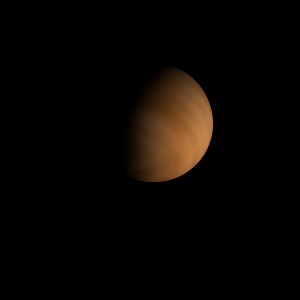|
|
Space Astro
|
Info for exoplanet "Shabi Gu"
| Scientific (actual) data |
|---|
| Name | PSR J1502-6752 b |
| Planet status | Confirmed |
| Planet mass | 26 |
| Orbital period | 2.48446 |
| Semi major axis | 0.04 |
| Discovered | 2012 |
| Updated | 2018-12-19 |
| Publication | Published in a refereed paper |
| Detection type | Timing |
| Star name | PSR J1502-6752 |
| Right ascension | 225.58° |
| Declination | -67.87° |
| Star distance | 4200 |
| Star sp type | PSR |
| Wikipedia article | PSR J1502-6752 b |
Back
| |
| Fictional info (?) |
|---|
| Suggested name | Shabi Gu |
| Planet type | Huge cold gas giant |
| It has the longest rotation period (445 days) of any planet in its solar system and rotates in the opposite direction to most other planets.
It has the densest atmosphere of the huge cold gas giants, consisting primarily of water vapor. .
The smooth Borealis basin in the northern hemisphere covers 31 percent of the planet and may be a giant impact feature. |
| Atmosphere | Water vapor | 94% |
| Carbon dioxide | 4.4% |
| Helium | 0.32% |
| Ozone | 0.29% |
| Ammonia | 0.028% |
| Methane | 0.017% |
| Carbon monoxide | 5.8E-5% |
| Atmospheric pressure | 40 bar |
 |
| No known satellites |
| Google search for Shabi gu |
|
Website by Joachim Michaelis
|
|
|
|